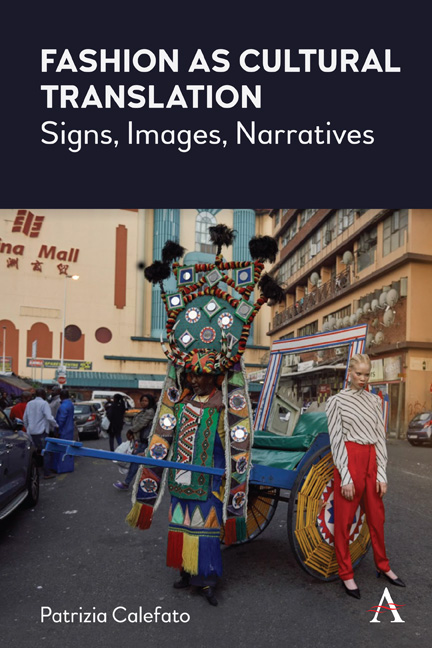Book contents
- Frontmatter
- Contents
- Introduction: Fashion as Cultural Translation in the Hyperconnected World
- Supplement to the Introduction: Fashion, the Hyperconnected World and Coronavirus
- 1 Time
- 2 Spaces
- 3 Fashion as Cultural Tradition: Italian Style
- 4 Fashion as Cultural Translation
- 5 Clothed Bodies
- 6 The Body as Text
- 7 Humans and Beyond
- 8 Fashion and the ‘Second Nature’
- 9 Fashion, Communication and Converging Media
- 10 Fashion Narratives in Visual Culture
- Conclusions: Fashion as an Idea about the Future
- References
- Index
3 - Fashion as Cultural Tradition: Italian Style
Published online by Cambridge University Press: 18 February 2021
- Frontmatter
- Contents
- Introduction: Fashion as Cultural Translation in the Hyperconnected World
- Supplement to the Introduction: Fashion, the Hyperconnected World and Coronavirus
- 1 Time
- 2 Spaces
- 3 Fashion as Cultural Tradition: Italian Style
- 4 Fashion as Cultural Translation
- 5 Clothed Bodies
- 6 The Body as Text
- 7 Humans and Beyond
- 8 Fashion and the ‘Second Nature’
- 9 Fashion, Communication and Converging Media
- 10 Fashion Narratives in Visual Culture
- Conclusions: Fashion as an Idea about the Future
- References
- Index
Summary
Signs and Atmospheres of the Italian Style
Fashion is a sociocultural system which regulates the relationship between individuals and society, past and present, masculine and feminine, the older and younger generations, the body and space. As a language, fashion increases the visibility of different communities, including social groups, generations and national identities. Italy still holds its global reputation as the country of fashion: a variety of studies within the field of fashion theory have considered this topic, and different exhibitions have focused on the concept of Italian style from different perspectives. Recent exhibitions include ‘Il Nuovo Vocabolario Della Moda Italiana’ (The New Dictionary of Italian Fashion), held in 2015 at the Triennale in Milan, curated by Eleonora Fiorani, Paola Bertola and Vittorio Linfante (2015); and ‘Italiana’, held in 2018 at Palazzo Reale in Milan, curated by Maria Luisa Frisa and Stefano Tonchi (2018). The question that I seek to answer here is: in what way can fashion – with its signs, icons and atmospheres – stand as a sociocultural system of modernity able to channel an idea of cultural heritage and tradition that is also an issue of translation?
Let's begin with a cinematographic example. In 1972, Billy Wilder set and shot his film Avanti! The relationship between fashion and this film is an obvious one. However, as it captures an atmosphere, perfumes and the sun on the skin of its two protagonists – the young shop assistant from London, Pamela Piggott (played by Juliet Mills), and the 40-year-old entrepreneur from Baltimora, Wendell Ambruster, Jr (Jack Lemmon) – these aspects end up functioning in tandem as the shell of the narrative. In this sense, they operate similarly to fashion, which does not correspond merely to a garment or an accessory; it is instead an atmosphere, the feel of time and a landscape. As Winder observed in an interview, ‘that's the setting where I wanted to evoke the magic of the Italian countryside inundated with sun’ and ‘the manner in which it touches a young girl who lived her whole life in a damp and cold country’ (Wilder, in Horton, 2001, 75– 76).
- Type
- Chapter
- Information
- Fashion as Cultural TranslationSigns, Images, Narratives, pp. 21 - 32Publisher: Anthem PressPrint publication year: 2021



